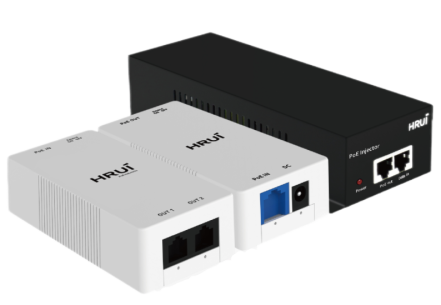
In the realm of system networking, three key types of switches are frequently mentioned: access switches, aggregation switches, and core switches. The part of the network that directly connects to user devices is referred to as the access layer. The layer that lies between the access layer and the core layer is known as the distribution or aggregation layer, while the backbone of the network is termed the core layer. This article delves into the concept of core switches and offers guidance on selecting the right one for your network.
What is a Core Switch?
A core switch is not merely a type of switch but rather denotes the switch that operates at the core layer (the network's backbone). Positioned at the top of the three-layer network architecture, it functions like a senior management team in an organization, tasked primarily with efficiently routing data from the aggregation layer. Core switches are critical for establishing a fast and reliable network architecture through high-speed data forwarding.
Typically, core switches are Layer 3 switches equipped with robust network management capabilities. They are characterized by numerous ports and high bandwidth, offering greater reliability, redundancy, throughput, and lower latency compared to access and aggregation switches. For a network with over 100 computers, a core switch is indispensable for ensuring stability and high performance.
Factors to Consider When Choosing a Core Switch
When selecting a core switch, it’s essential to focus on several crucial aspects that can significantly impact the performance and reliability of your network. Here are key factors to consider:
Port Type, Rate, and Quantity
Evaluate the required port types, speeds, and quantities based on your existing aggregation layer switch. If budget permits, opt for a core switch with diverse port types and a higher number of ports. For instance, a switch equipped with 10 Gigabit uplink ports or stacking ports can accommodate future network expansion.
Backplane Bandwidth
For core switches, if you want to achieve full-duplex non-blocking, you must meet the minimum standard requirements (backplane bandwidth = port number * port rate * 2), the higher the backplane bandwidth, the faster the data exchange, the core switch The stronger the data processing capability.
Forwarding Rate
The core switch plays a pivotal role in managing substantial network traffic, necessitating a forwarding rate that typically outpaces that of access and aggregation switches. To calculate the required forwarding rate for a core switch, you can use the following formula:
**Forwarding Rate = Mpps + (Number of Gigabit Ports × 1.488 Mpps) + (Number of 100-Megabit Ports × 0.1488 Mpps)**.
It's essential to consider that the forwarding rate needed by a core switch is directly influenced by the number of devices connected to the network. Rather than making arbitrary selections, it's advisable to analyze various traffic reports and assess user group patterns. This careful consideration helps prevent potential network bottlenecks and avoids unnecessary resource expenditure.
For Layer 3 switches, a switch is deemed qualified when both the backplane bandwidth and the forwarding rate meet or exceed the minimum standard requirements. This ensures optimal performance and reliability in handling network traffic.
Link Aggregation
Link aggregation combines multiple physical ports into a single logical port, enhancing bandwidth and maintaining network stability. It's advisable to choose a core switch with link aggregation capabilities to ensure efficient transmission of traffic from the aggregation switch to the core switch.
VLAN and QoS Support
As global data traffic grows, the demand for voice, video, and data traffic increases, leading to potential issues such as network congestion. Relying solely on increased bandwidth is not a sustainable solution. VLANs (Virtual Local Area Networks) allow for effective segmentation of different applications, while QoS (Quality of Service) prioritizes real-time and critical traffic, helping to alleviate delay and congestion issues. Thus, selecting a core switch that supports VLANs and QoS is both economical and efficient.
Redundant Performance
Redundancy in a core switch is vital for safeguarding network security. It's essential to choose a switch that offers substantial redundancy to ensure a seamless switch-over in case of hardware failure, thereby preventing network outages. Key redundancy features to look for include port, module, and power supply redundancy, as well as routing redundancy through protocols like HSRP (Hot Standby Router Protocol) and VRRP (Virtual Router Redundancy Protocol), which provide backup solutions and enhance network stability.
Security Features
Given that the core layer serves as the network’s backbone, it is critical to choose a core switch with robust security features. Effective security measures may include network management functions like ACLs (Access Control Lists) and flow control, ARP (Address Resolution Protocol) protection to mitigate spoofing attacks, and VPN (Virtual Private Network) capabilities to secure communications between corporate intranets.
Additional Parameters to Consider
Beyond the aforementioned factors, consider other functionalities such as stacking and hot backup. These features are significant in determining the performance, efficiency, and stability of core switches in real-world applications. A core switch is pivotal in maintaining the integrity of the entire network; a catastrophic failure could lead to extensive downtime and losses.
Implementing hot backup protocols for core switches can substantially bolster network reliability. In the event of a core switch failure, a backup router can seamlessly assume its functions, minimizing disruptions until the primary switch is restored.
By taking these considerations into account, you can make an informed decision when selecting a core switch that aligns with your network’s demands and future growth. The right core switch not only facilitates efficient data transfer but also underpins the stability and security of your entire network infrastructure.









